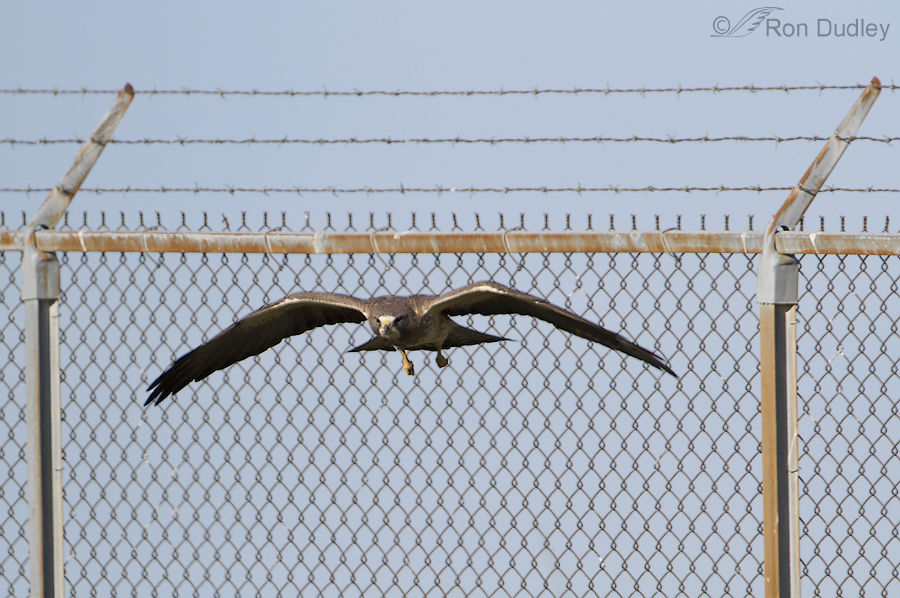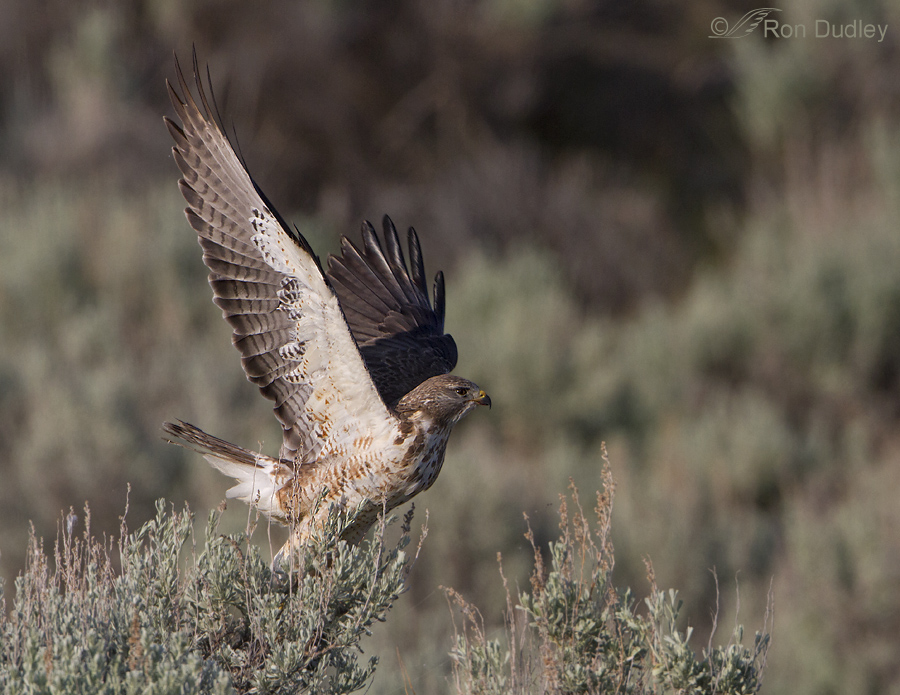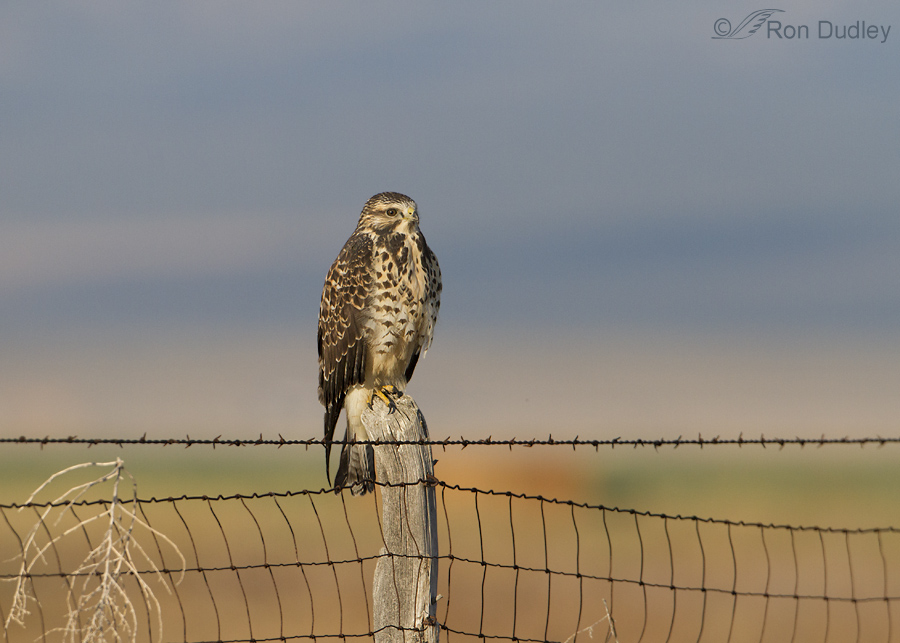Swainson’s Hawks have been absent from North America for many months. They winter in the pampas of South America and their breeding ground is the temperate zone of North America which means their annual migratory round trip is a long one – roughly 12,000 miles (among raptors only the Arctic Peregrine Falcon migrates further).
This is the time of year I begin to anticipate their return as they arrive in good numbers next month. Last night I started thinking about them again so they’re the subject of my post this morning.
1/2500, f/7.1, ISO 500, 500 f/4, 1.4 tc, not baited, set up or called in
I see so many of these hawks hunting from power poles or fence posts that it’s always a treat to find one on a natural perch. This bird is taking off from sagebrush on Antelope Island.
 1/2500, f/6.3, ISO 500, 500 f/4, 1.4 tc, not baited, set up or called in
1/2500, f/6.3, ISO 500, 500 f/4, 1.4 tc, not baited, set up or called in
I hope you’ll forgive the inclusion of this image as it leaves a lot to be desired but I found it interesting anyway. The wire background is so bad that I like it and I enjoy how the bird is framed by the rusty metal fence posts and rail. This hawk had been hunting (grasshoppers most likely) from a particularly ugly “bison fence” on Antelope Island.
1/3200, f/5.6, ISO 640, 500 f/4, not baited, set up or called in
I encountered this Swainson’s last fall in a remote agricultural valley in extreme northern Utah. For me this image epitomizes how well Swainson’s Hawks have adapted to agricultural landscapes. The open, expansive sky, gnarly old fence post and rusty wire, the golden colors of harvest in the lower background and even the wind-blown “weed” stuck in the fence – all give the image a flavor that I enjoy (a leftover from my Montana heritage I suspect).
From here forward I’ll be watching for my first Swainson’s Hawk of the season every day I’m in the field. I hope I get some decent shots of that first bird…
Ron




Your site is new to my wife and I but what a delightful find it is!
I too hope that you get some ‘decent’ shots of that first bird. And the next, and the next…
I too really like the second shot – the beauty of the bird emphasizes the ugliness of the fence and the wire – and vice versa.
Thank you, Elephant’s Child.
The last shot IS really iconic, both of the species’ adaptation to North American agriculture and its near demise in Argentina, as large portions of their wintering range was converted from livestock grazing to crops such as sunflower seeds for oil. The grasshoppers (which constitute a primary herbivore in Las Pampas) then become Public Enemy Number 1, and the poison sprayed to kill them (monocrotophos) nearly wiped out the Swainsons, which is known as the Grasshopper Hawk in Argentina. Here, the Swainson’s has learned to follow tractors around, feasting on the grasshoppers and small rodents kicked up; in Argentina they were following the pesticide applicator tractors around, then going to roost in the trees planted as wind breaks around the ranch-houses – and people would find 700-800 dead on the ground in the morning. Since it’s the adults who go to Argentina for the winter (biologist think the juveniles go to the coast of Brazil), that loss of reproductive adults was very harmful to the population. Now, education and international agreements has helped the farmers to switch to a pyrethrins-based insecticide, which does not harm birds. But it was scarey there for awhile before they figured out what the problem was. First they had to figure out where the birds went for the winter (satellite telemetry helped there) and then why so many fewer adults were returning to Canada and the US in the spring. It was a great example of international cooperation.
I had no idea about their disturbing history in South America, Louise. I’m delighted that you took the time to share it all with us (and that they were able to figure out what was going on and remedy it). Once again you’ve provided some fascinating background and I appreciate it!
Wonderful shots and interesting info Ron! Thanks for sharing!
Charlotte
Thank you, Charlotte.
So beautiful. I especially like the last one. Is it a juvenile or is it just a particularly blotchy one?
I believe that bird’s a juvenile, Sharon.
Hi Ron,
We saw two large kettles of Swainson’s hawks here in Oklahoma last weekend. They are headed your way!
That’s great news, Mark. Thanks for letting me know they’re on their way!